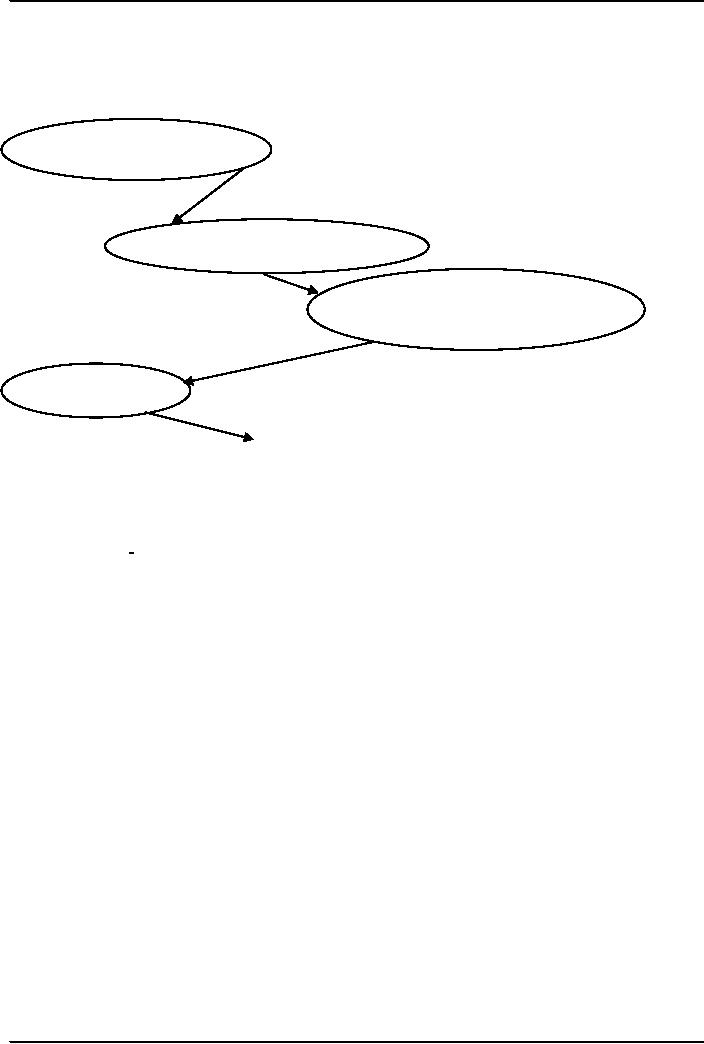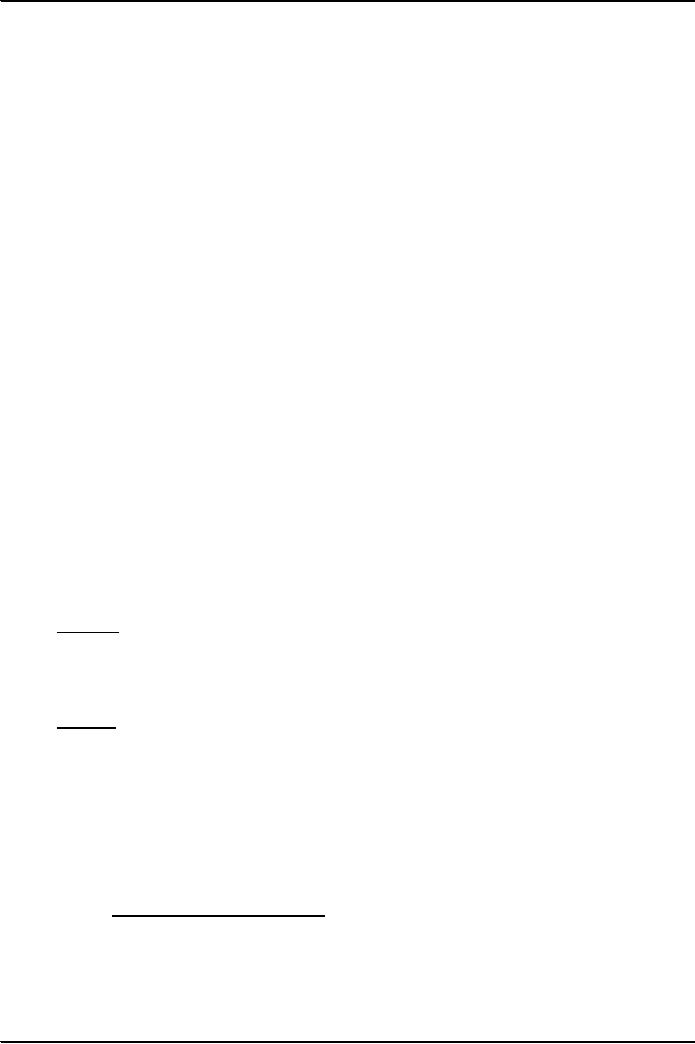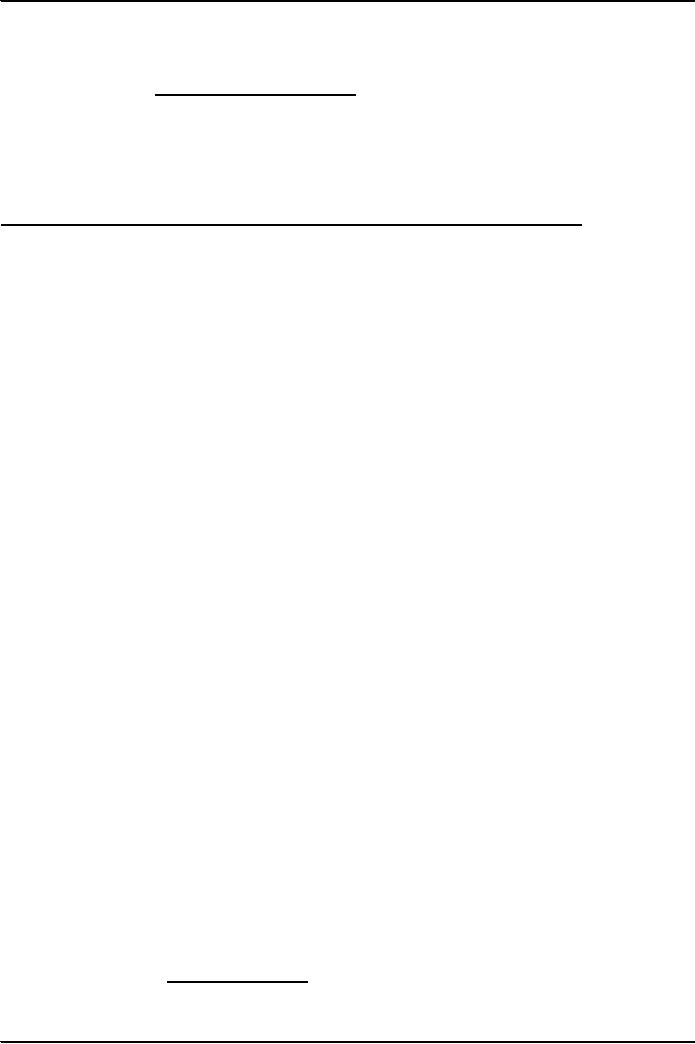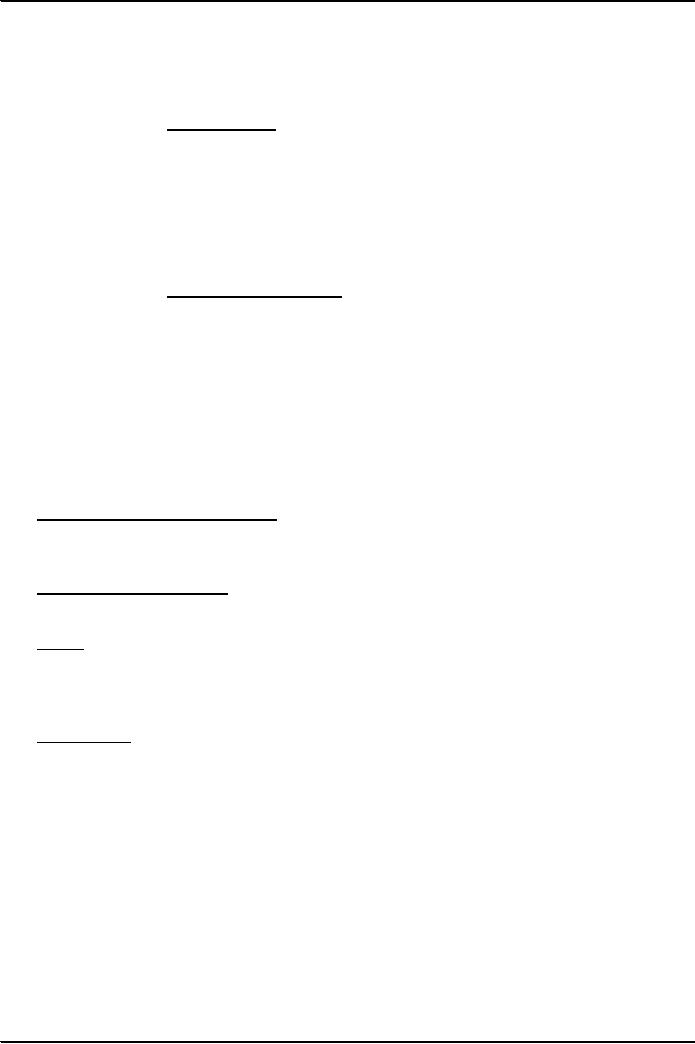 |
SUBSTANTIVE PROCEDURES |
| << Audit evidence through Audit Procedures |
| Concept of Audit Evidence >> |

Fundamentals
of Auditing ACC 311
VU
Lesson
21
SUBSTANTIVE
PROCEDURES
Auditing
Auditor's
Opinion (depends
upon)
Reasonable
Assurance (depends
upon)
Sufficient
Appropriate Audit evidence
(depends
upon)
Audit
procedures
Č
Test
of Control
Č
Substantive
Procedures
� Test
of details
� Analytical
procedures
Test
of Control
The
auditor is required to perform tests of
controls:
� When
the internal controls are operating
effectively or
� When
substantive procedures alone do
not provide sufficient appropriate
audit evidence at the
assertion
level.
Tests
of controls comprise of testing three
things:
1.
Design that the internal controls
are properly designed to
cover the risk it is meant
for.
2.
Implementation that the internal
controls have been put into
operation.
3.
Operating effectiveness that the
systems of internal control
were operating effectively at
relevant
times during the
period.
How
to perform test of control
� Testing
the Design:
Proper
design of internal control is
tested through ICQs and
ICEC.
� Testing
the Implementation:
Implementation
of internal control is tested
through walk through test
with a little sample
size.
� Testing
the Operating effectiveness:
Here
the test is performed through a
compliance test based on a judgmental
sample.
Substantive
Procedures
Substantive
procedures are performed in
order to detect material
misstatements at the assertion level
(like;
occurrence,
completeness, accuracy, valuation,
existence, rights and control),
and include tests of details
of
classes
of transactions, account balances
and disclosures and
substantive analytical
procedures.
The
auditor plans and performs
substantive procedures to be responsive
to the related assessment of the
risk of
material misstatement.
Irrespective of the
assessment of risk of material
misstatement, the auditor should design
and perform
substantive
procedures for each material
class of transactions, account
balance, and
disclosure.
78

Fundamentals
of Auditing ACC 311
VU
The
auditor's substantive procedures should include the
following audit procedures
related to the financial
statement
closing process:
� Agreeing the
financial statements to the underlying
accounting records;
and
� Examining
material journal entries and
other adjustments made
during the course of preparing
the
financial statements.
When
the auditor has determined that an
assessed risk of material misstatement at
the assertion level is a
significant risk,
the auditor should perform substantive
procedures that are
specifically responsive to
that
risk.
Types of
Substantive Procedures
� Test
of details
Land
Registry
Debtors
Circular
Building
rent
Deed/Agreement
�
Analytical
procedures
Payroll
Turnover
ratio
Comparing
with previous
month's
salary
Production
Cost
Comparing
with the number of
units
produced
Comparing
with the previous month's
cost
of production
Nature
of Substantive Procedures
Substantive
analytical procedures are applied on
large volume of transactions, which
are predictable over
time.
� Tests
of details are ordinarily
more appropriate to obtain audit
evidence regarding certain
assertions
about
account balances, including
existence and
valuation.
� Analytical
procedures are applied on large
volume of transactions, which are
predictable over time.
(cost
of goods sold, payroll,
sale)
In
designing substantive analytical
procedures, the auditor considers
such matters as the
following:
� The
suitability of using analytical
procedures given the assertions.
If controls,
over sales order processing,
are weak; the auditor may
place more reliance on tests
of details
rather
than substantive analytical
procedures for assertions
related to debtors.
When
auditing the collectibility of accounts
receivable, the auditor may apply
substantive analytical
procedures
to an aging of customers' accounts in
addition to tests of details on
subsequent cash
receipts.
� The
reliability of the data;
In determining
whether data is reliable for purposes of
designing substantive analytical
procedures, the
auditor
considers the following:
o Information
is ordinarily more reliable when it is obtained
from independent sources outside
the
entity
o Comparability
of the information available
o Nature
and relevance of the information
available (whether budgets have
been established as
results
to be expected rather than as goals to be
achieved.
o Controls
over the preparation of the information (controls
over the preparation, review and
maintenance
of budgets)
� Whether the
expectation is sufficiently precise to
identify a material misstatement at the
desired level of
assurance.
For
this the auditor considers the following
facts:
i. The
accuracy with which the
expected results of substantive
analytical procedures can
be
predicted
(comparison of GP ratio should be
consistent rather than the ratio of
discretionary
expenses
like entertainment)
79

Fundamentals
of Auditing ACC 311
VU
ii.
The degree to which
information can be disaggregated
(effective analysis will be of a
component
not of
the entity as a whole)
iii.
The availability of the information,
both financial and non financial
(budgets are financial,
whereas
units of production are non
financial)
� The
amount of any difference in recorded
amounts from expected values
that is acceptable.
Depends
upon the:
i.
materiality
ii.
Possibility of
misstatement in the specific account
balance, class of transactions, or
disclosure
Timing
of Substantive Procedures
YEAR
END SUBSTANTIVE PROCEDURES ARE
ALWAYS MORE
RELIABLE
When
substantive procedures are
performed at an interim date, the
auditor should perform
further
substantive
procedures or substantive procedures
combined with tests of controls to cover
the remaining
period
that provide a reasonable
basis for extending the audit
conclusions from the interim
date to the
period
end.
In
considering whether to perform
substantive procedures at an interim
date the auditor considers
such
factors
as the following:
� The
control environment and
other relevant controls. (Like payroll
disbursement)
� The
availability of information at a later
date that is necessary for
the auditor's procedures (prov
for
doubtful
debts can be investigated
interim but debtor and
inventory can be verified at the
year end).
� The
objective of the substantive
procedure.
� The
assessed risk of material misstatement
(prefer always at year
end).
� The
nature of the class of transactions or
account balance and related
assertions (like frequency
of
occurrence
of the transactions e.g. salaries
are paid monthly whereas
bonuses are paid annually).
� The
ability of the auditor to perform
appropriate substantive procedures or
substantive procedures
combined
with tests of controls to cover the
remaining period in order to reduce the
risk that
misstatements
that exist at period end
are not detected (staffing
problem that cannot make
the
auditor
able to extend till the year
end)
If
substantive procedures are
performed at an interim date, the
auditor may sometimes
consider applying
tests
of controls also on the transactions of remaining
period while extending his
substantive procedures
from
interim date to the period
end.
In
situations of actual or expected fraud,
auditor may prefer applying
substantive procedures at period
end.
If
misstatements are detected in
classes of transactions or account
balances at an interim date, the
auditor
ordinarily
modifies the related assessment of risk
and the planned nature, timing or extent
of the substantive
procedures
covering the remaining period.
Substantive
procedures applied in a prior period
are not sufficient to
address a risk of material
misstatement
in the current
year except in certain
circumstances.
Extent
of performance of substantive
procedures
Greater the risk of
material misstatement due to
weaknesses in the system of internal
control, the greater
would
be the risk of material misstatement in the financial
statements.
In
designing tests of details, the
auditor may use either audit
sampling or may choose to
select items to be
tested
by some other selective
means of testing.
Adequacy
of Presentation and Disclosure
The
auditor should perform audit
procedures to evaluate whether the
overall presentation of the
financial
statements,
including the related disclosures,
are in accordance with the
applicable financial
reporting
framework.
Assertions
in obtaining Audit
Evidence
Assertions
about classes of transactions
and events for the period
under audit;
(a)
i.
Occurrence
transactions and events
that have been recorded
have occurred and
pertain
to the
entity;
80

Fundamentals
of Auditing ACC 311
VU
ii.
Completeness
all transactions and
events that should have been
recorded have been
recorded;
iii.
Accuracy
amounts and other data
relating to recorded transactions and
events have been
recorded
appropriately.
iv.
Cutoff
transactions and events
have been recorded in the
proper period.
v.
Classification
transactions and events
have been recorded in the
proper accounts.
Assertions
about account balances at the
period end.
(b)
i.
Existence
assets, liabilities, and equity
interests exist;
ii.
Rights
and obligations the entity holds or controls the
rights to assets, and liabilities
are
the obligations of
the entity;
iii.
Completeness
all assets, liabilities
and equity interests that should
have been recorded
have
been recorded;
iv.
Valuation
and allocation assets, liabilities,
and equity interests are included in the
financial
statements
at appropriate amounts and any resulting
valuation or allocation
adjustments
are
appropriately recorded.
(c)
Assertions
about presentation and
disclosure:
i.
Occurrence
and rights and obligations
disclosed events, transactions
and other matters
have
occurred and pertain to the
entity;
ii.
Completeness
all disclosures that should
have been included in the financial
statements
have
been included;
iii.
Classification
and understandability financial information is
appropriately presented
and
described,
and disclosures are clearly
expressed;
iv.
Accuracy
and valuation financial and
other information are
disclosed fairly and
at
appropriate
amounts.
Audit
Procedures for obtaining
Audit Evidence
The
auditor uses one or more
types of audit procedures
described below:
(i)
Inspection of Records or
Documents
It
consists of examining records or
documents whether internal or external,
in paper form, electronic
form,
or
other media. Inspection provides
evidence of varying degrees of
reliability depending on their nature
and
source
and in the case of internal
records, on effectiveness of controls
over their
production.
(ii)
Inspection of Tangible
Assets
It
consists of physical examination of the
assets. It may provide reliable
audit evidence of their
existence
cannot
necessarily about other
assertions.
(iii)
Inquiry
It
means seeking information of
knowledgeable persons throughout the
entity or outside the entity.
Those
may be
formal written or informal oral. It
provides an auditor with new
information or corroborative
evidences.
It may also bring to high
information different from the
one possessed by the auditor.
Certain
oral
inquiries might be got confirmed
through written
representations.
(iv)
Confirmations
It is a
specific type of inquiry. It is the
process of obtaining a representation of
information or an existing
condition
directly from a third party.
Confirmations are sought
from debtors, creditors,
bankers, legal
advisors
etc.
81
Table of Contents:
- AN INTRODUCTION
- AUDITORS’ REPORT
- Advantages and Disadvantages of Auditing
- OBJECTIVE AND GENERAL PRINCIPLES GOVERNING AN AUDIT OF FINANCIAL STATEMENTS
- What is Reasonable Assurance
- LEGAL CONSIDERATION REGARDING AUDITING
- Appointment, Duties, Rights and Liabilities of Auditor
- LIABILITIES OF AN AUDITOR
- BOOKS OF ACCOUNT & FINANCIAL STATEMENTS
- Contents of Balance Sheet
- ENTITY AND ITS ENVIRONMENT AND ASSESSING THE RISKS OF MATERIAL MISSTATEMENT
- Business Operations
- Risk Assessment Procedures & Sources of Information
- Measurement and Review of the Entity’s Financial Performance
- Definition & Components of Internal Control
- Auditing ASSIGNMENT
- Benefits of Internal Control to the entity
- Flow Charts and Internal Control Questionnaires
- Construction of an ICQ
- Audit evidence through Audit Procedures
- SUBSTANTIVE PROCEDURES
- Concept of Audit Evidence
- SUFFICIENT APPROPRIATE AUDIT EVIDENCE AND TESTING THE SALES SYSTEM
- Control Procedures over Sales and Debtors
- Control Procedures over Purchases and Payables
- TESTING THE PURCHASES SYSTEM
- TESTING THE PAYROLL SYSTEM
- TESTING THE CASH SYSTEM
- Controls over Banking of Receipts
- Control Procedures over Inventory
- TESTING THE NON-CURRENT ASSETS
- VERIFICATION APPROACH OF AUDIT
- VERIFICATION OF ASSETS
- LETTER OF REPRESENTATION VERIFICATION OF LIABILITIES
- VERIFICATION OF EQUITY
- VERIFICATION OF BANK BALANCES
- VERIFICATION OF STOCK-IN-TRADE AND STORE & SPARES
- AUDIT SAMPLING
- STATISTICAL SAMPLING
- CONSIDERING THE WORK OF INTERNAL AUDITING
- AUDIT PLANNING
- PLANNING AN AUDIT OF FINANCIAL STATEMENTS
- Audits of Small Entities
- AUDITOR’S REPORT ON A COMPLETE SET OF GENERAL PURPOSE FINANCIALSTATEMENTS
- MODIFIED AUDITOR’S REPORT